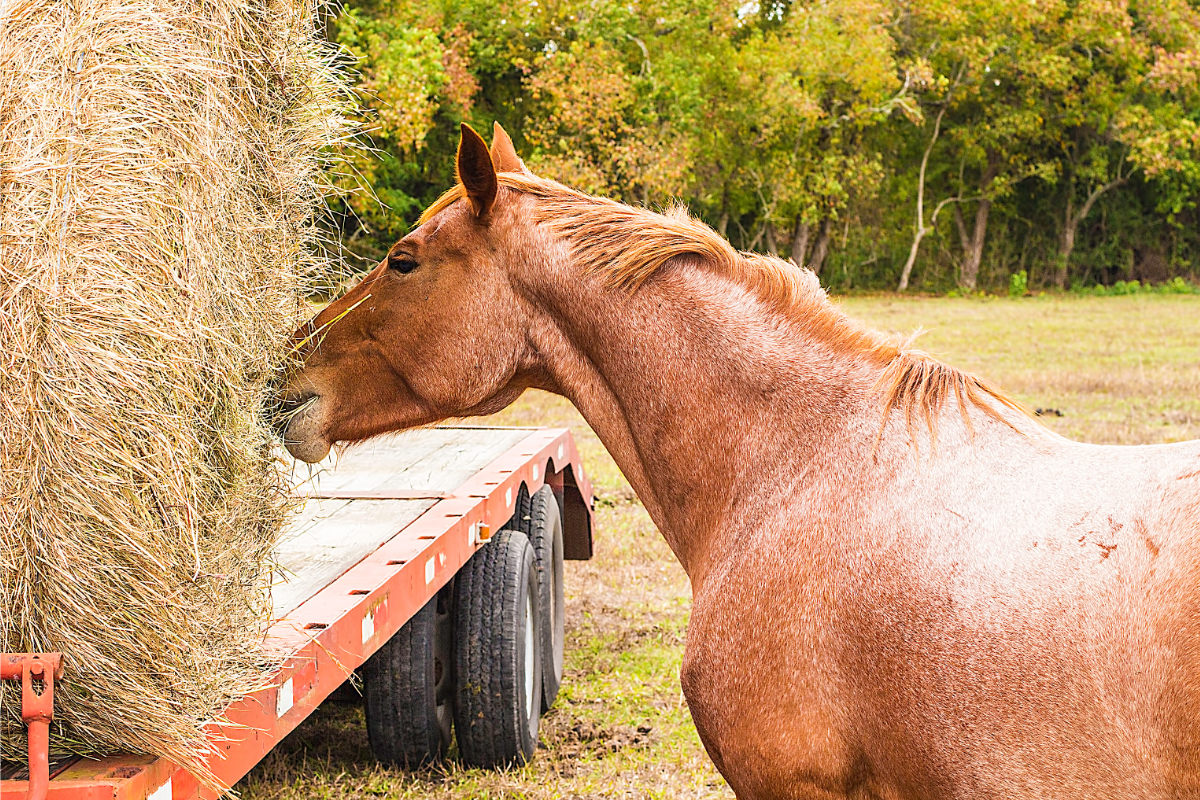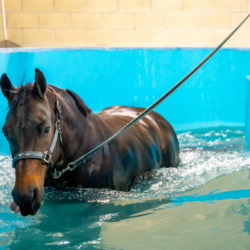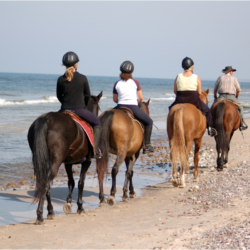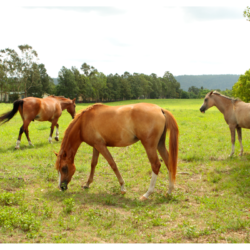Mycotoxins, toxic compounds produced by certain species of fungi, represent a serious threat to equine health. Found in cereals, forage and other contaminated feed, they can cause a range of health problems in horses, from digestive and respiratory disorders to immunosuppressive and hepatotoxic effects. Chronic exposure to mycotoxins can lead to serious illness, reducing horses’ performance, well-being and longevity. Understanding the mechanisms of action of mycotoxins, as well as detection and prevention methods, is crucial for owners and equine health professionals.
What are mycotoxins?
Moulds produce mycotoxins, secondary metabolites. When ingested, inhaled or absorbed through the skin, they cause acute or chronic toxicity in humans and animals. Various fungi produce these natural environmental contaminants. One fungus can produce several mycotoxins, but production depends on environmental conditions (insects, drought, rain).
According to the FAO, 25% of the world’s cereal production is contaminated by mycotoxins. A 2010 study revealed that almost all horse feed contains at least one type of mycotoxin. There are more than 400 mycotoxins listed, with a wide variety of chemical structures and clinical signs. Acute mycotoxicosis is rare, but chronic mycotoxicosis can lead to reduced performance and immunodeficiency.
Susceptibility to mycotoxins varies according to dose, duration of exposure, species, age and state of health. Monogastric animals (horses, pigs, poultry and humans) are more sensitive than ruminants.
In horses, mycotoxins are implicated in colic, gastrointestinal disorders, weight loss and immunosuppression. In severe cases, liver problems, paralysis and brain damage can occur. Poor storage of hay and cereal mixes increases the risk of poisoning.
What mycotoxins are horses exposed to?
Hay can quickly become mouldy in the presence of heat and humidity. It is essential to check the hay regularly, even if it looks dry at first. If the hay looks damp, smells musty or shows visible signs of mould, it should be discarded. Laboratories can test for the presence of mycotoxins.
- Aflatoxins: Produced by Aspergillus flavus and Aspergillus parasiticus, they contaminate maize, soya, peanuts and sorghum, causing hepatotoxicity, loss of appetite, neurological disorders and intestinal bleeding.
- Fumonisins: Produced by Fusarium verticillioides, they mainly contaminate maize. Fumonisin B1 causes equine leukoencephalomalacia, with paralysis and ataxia.
- Zearalenone: Produced by Fusarium culmorum and Fusarium graminearum, it contaminates maize, barley and wheat, mimicking the action of oestrogens and affecting reproduction.
- Trichothecenes: Produced by Fusarium, they contaminate wheat and maize. Deoxynivalenol (DON) causes loss of appetite and coagulation anomalies.
- Lolitreme: Produced by Neotyphodium lolii, it contaminates ryegrass, causing muscle tremors and ataxia.
- Ergot alkaloids: Produced by Claviceps purpurea, they contaminate rye and wheat, causing hyperthermia and necrosis of the extremities.
- Satratoxin: Produced by Stachybotrys chartarum, it contaminates straw and hay, causing necrosis of the lips and respiratory disorders.
How do they develop?
Mycotoxins are toxic compounds produced by certain moulds and fungi. Their production in animal feed depends on various factors, including storage practices and environmental conditions.
Inappropriate storage of hay or cereals is the main cause of mycotoxin poisoning in horses. Fodder and feed can develop moulds if they are not stored correctly, especially in damp and poorly ventilated areas.
The risk of poisoning increases in the spring and summer in damp, mild weather. Poor drying and humidity levels above 14-15% encourage mould growth. Heat, humidity and poor ventilation create ideal conditions for the production of mycotoxins, degrading the quality of hay and reducing its digestible nutrients.
It is important to note that not all moulds produce mycotoxins, but they can still harm horses by causing lung problems. Mouldy hay can release spores that cause respiratory problems such as coughing, laboured breathing and reduced athletic performance, especially in poorly ventilated areas.
What are the symptoms of mycotoxin ingestion?
Symptoms of mycotoxin poisoning are often vague. It can be difficult to detect your horse’s exposure to mycotoxins directly. It is essential to consult your vet if you suspect mycotoxin poisoning. The diagnosis is generally made once other causes have been ruled out.
Possible symptoms to look out for:
- Loss of appetite, anorexia, lethargy
- Colic
- Liver impairment, liver damage
- Diarrhoea, intestinal irritation
- Respiratory problems, persistent cough, asthma
- Fertility problems, repeated abortion, sperm quality
- Weak immune system
- Nervous system damage, muscle tremors, ataxia
- Ulcerative lesions of the oral cavity
Several mycotoxins can contaminate feed simultaneously, resulting in a combination of symptoms. Not all horses in a group have the same reactions; their immune systems and microbiota influence their sensitivity.
It is important to note that mycotoxicosis is often difficult to diagnose. In the event of suspicion, feed analyses may be necessary.
What is the treatment?
The main treatment for mycotoxin poisoning is to stop feeding the contaminated fodder or cereals.Immediate elimination of the source of exposure reduces the risk of serious health problems. It is crucial to consult a veterinarian to establish appropriate treatment. Supplements such as milk thistle can support the liver and aid recovery. Toxin binders, natural substances, bind to toxins in the gastrointestinal tract and eliminate them before they are absorbed.
Toxin-binding supplements have shown preliminary benefits in reducing the effects of mycotoxins. Adding them to the diet can reduce the risk of serious illness from ingesting mouldy hay. However, horses should never be fed mouldy hay. These supplements can reduce the effects of involuntary exposure to mycotoxins.
Available mycotoxin binders include clay minerals,yeast cell wall extract, organic polymers, activated charcoal and aluminosilicate. These supplements aim to bind and eliminate mycotoxins before they enter the bloodstream. Yeast and bentonite are common binders, but bentonite can also bind to essential nutrients, requiring careful use.
How can mycotoxins be prevented from forming in hay?
Contamination of plants by fungi is inevitable, as they are present in the soil and air. However, a number of good practices can limit the development of moulds and mycotoxins. Contamination is mainly caused by Fusarium spp. and climatic conditions such as rain, drought and insect attacks have a major influence on this contamination and the development of moulds.
At harvest, adopt practices such as high cutting and stalking to avoid soiling the forage. It is crucial to reach the dry matter threshold (85%) quickly by choosing a sunny, dry weather window, and to harvest quickly. Cereals, concentrates, fodder and bedding should be stored in a dry environment, with care taken to protect the packaging of concentrates and wrapped bales, as fungi such as Aspergillus and Stachybotrys thrive during storage.
Additional practices include drying hay thoroughly before storage, maintaining space around bales to promote ventilation,staggering bales, soaking dusty hay to reduce respiratory problems and regular hay analysis.
Systematically check hay and cereals for mould before feeding them to horses, especially those that are immunocompromised, young or old. In the event of contamination, it is imperative to stop feeding contaminated forage or cereals immediately.





